Colloquially named “arboreal alligator lizards”, the Abronia genus is comprised of around 30 strikingly beautiful species of Anguimorph lizards that are distributed from Mexico to El Salvador. These reptiles typically inhabit high altitude (1400m+) pine-oak, cloud and pre-montane forests, often restricting entire populations to just a single mountain range. This makes their distribution small and their habitat precious. All species are threatened with extinction, and many are categorised as “Endangered”. However, a new project set up by Consejo Nacional de Areas Protegidas (CONAP), the government agency that is concerned with conservation and sustainable use of biological resources, in collaboration with Parque Zoologico La Aurora may provide one last lifeline for Guatemala’s Abronia.
Arboreal Alligator Lizard and the Abronia genus
The Abronia genus is a diverse group of lizards. Although all species have distinct granular scales, robust angular heads and slender bodies, there are a lot of morphological distinctions within the genus from regal-looking horns to vibrant superciliary patterns and a whole spectrum of colours (sometimes within the same species).
Herpetologists know very little about arboreal alligator lizards because of their secretive behaviours. They occupy remote, hard-to-access regions and typically spend most of their time high in the forest canopy. When they are found, they are generally hiding beneath mosses and lichen or within the tanks of bromeliads.
Rowland Griffin is the Director of Conservation at Zoológico La Aurora and Founder of Indigo Expeditions. He has worked with Guatemalan herpetofauna for 11 years and is currently spearheading the zoo’s Abronia Project.
Rowland told Exotics Keeper: “As we currently understand, there are 12 species of Abronia in Guatemala and eight are endemic, most with very small distributions. They are rarely seen, so as a group, they are considered one of the most endangered genera of lizards.”

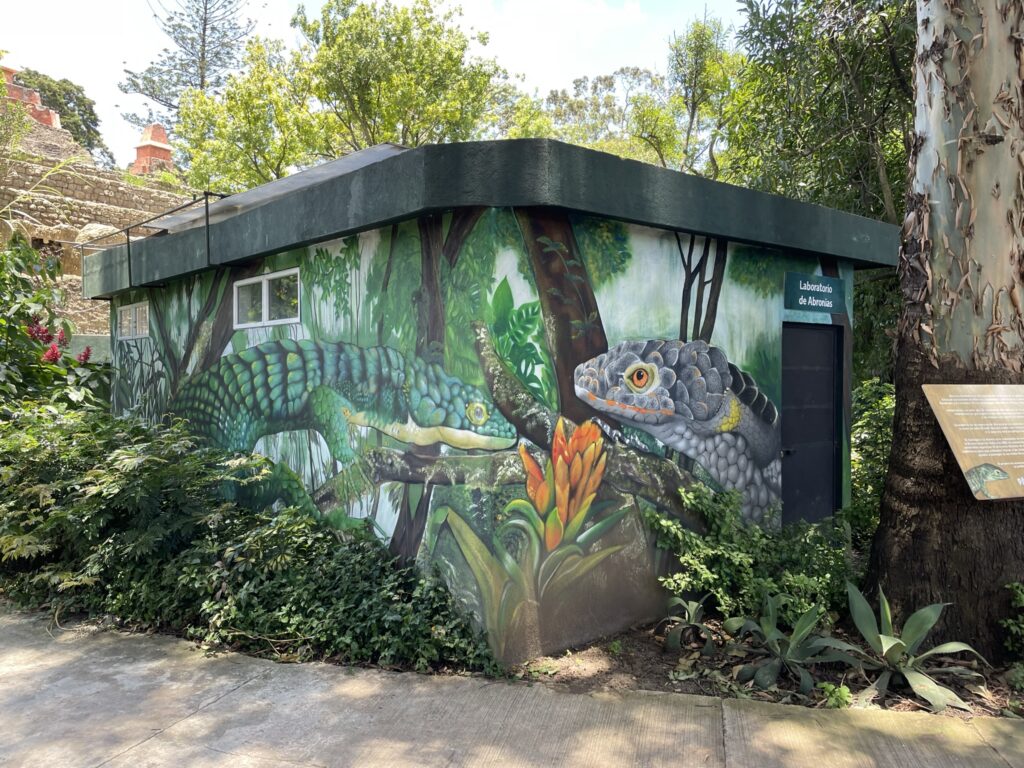
The Abronia Project
The Abronia Project was founded by Zoológico La Aurora in 2021 as part of the National Conservation Strategy for the genus. The strategy includes an ex-situ breeding component with re-introduction programmes that are being planned, managed and (eventually) executed by the zoo.
“Our ultimate aim is to have three pairs of each endemic species and maintain a cycle of breeding them each year” explains Rowland. “We will then grow the youngsters on until we can fit them with microchips and release them back into the wild.”
The microchips will allow researchers to monitor the success of the reintroductions and understand more about the cryptic behaviours of arboreal alligator lizards once they are released back into their natural habitat. This has the potential to fill a huge gap in our knowledge of the genus once the animals disperse back into the canopy.
Rowland continued: “We have to grow them on for a year because neonate arboreal alligator lizards are tiny. One of the species we have here is between 0.3 and 0.4 grams when they hatch, so they are really difficult to monitor if they are released straight away.”

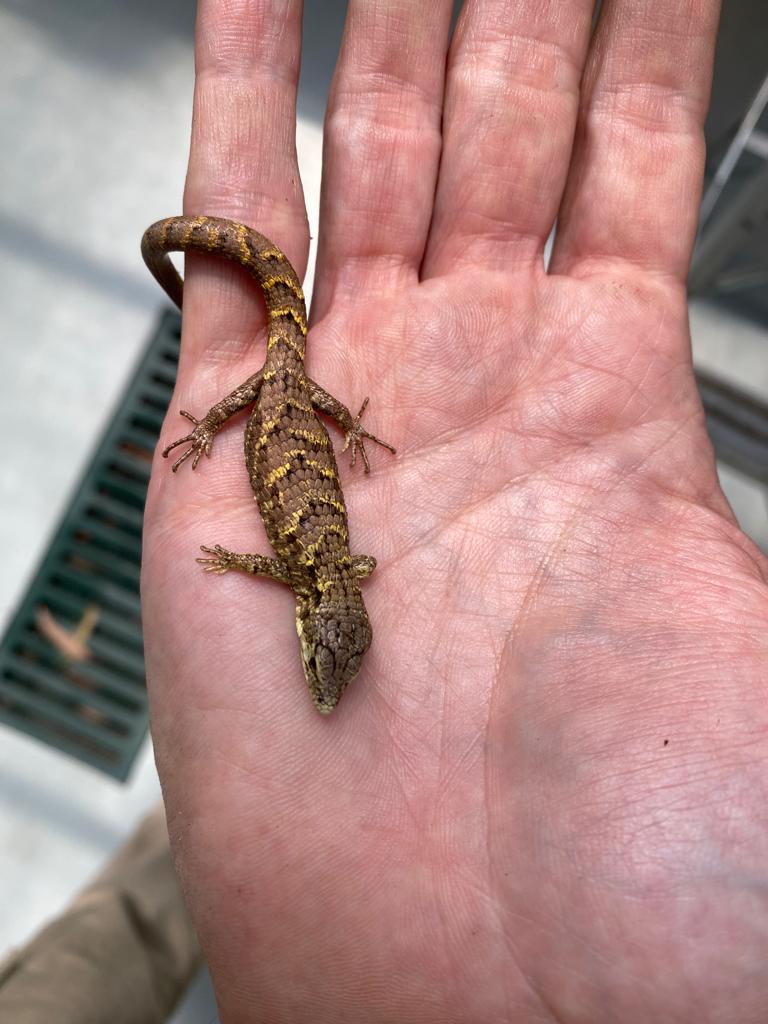
Abronia Diversity in Guatemala
Currently, the project has 10 captive individuals representing five species of Arboreal Alligator Lizards. These species have been selected and sourced carefully to fit into the project’s numerous conservation and educational outreach strategies.
Rowland explained: “The one we have had the most success with is the most Endangered one, Abronia campbelli. They are found in the Department of Jalapa and are only known from 19 km2. Within that range they are only found in oak trees with Spanish moss.”
“Most of the area where these very specific trees grow has been deforested and the only habitat remaining, around 0.05% of its original extent, is actually scattered islands of trees . So, the population within that, even though it is a very small area, is disconnected.”
“We have three pairs of that species, and we also have babies that were born in January this year. One of them is 5.4 grams the others are a little smaller.”
Whilst the project works closely with the most endangered species of arboreal alligator lizards, it also utilises the charisma of some of the more visually-striking species for educational outreach.
“The emblem of the project is Abronia vasconcelosii” Rowland added. “This species isn’t the most Endangered. In fact, it has one of the largest distributions of any Arboreal Alligator Lizard in Guatemala, but it is found around the city. On the outskirts of the city, you can still find pockets of habitat where they are found and in the past, they would have been found here where the city is located, in this valley. This is the species people are most likely to find in their gardens and it is also very beautiful with its green colouration and yellow auricular spikes.”
Another remarkable species that is far less likely to be encountered by people is Abronia anzuetoi. This species is found only on the southern and western slopes of Volcan Agua near Antigua. It is the largest of the Guatemalan species and can grow up to 40cm. “Anzuetoi hadn’t been seen by biologists for 48 years until last year and that individual is here in this project” added Rowland. “People were chopping the trees down and she was found amongst the wood and brought to us, so, she’s a very special animal! We’re currently looking for a male to pair her up with and hopefully learn a lot more about this species.”
The only species of Arboreal Alligator Lizard considered by the IUCN as “Least Concern” is Abronia lythochila. This is because it has a reasonably large distribution around Chiapas, Mexico but there is also a population that borders Guatemala, suggesting it might be reasonably widespread. These animals are known as “red-lipped arboreal alligator lizards” and can be bright red in colouration too.
On the other side of the coin is Abronia frosti which is black and white and only found in a patch of forest no larger than 7km2. This Guatemalan endemic arboreal alligator lizard is considered Critically Endangered.
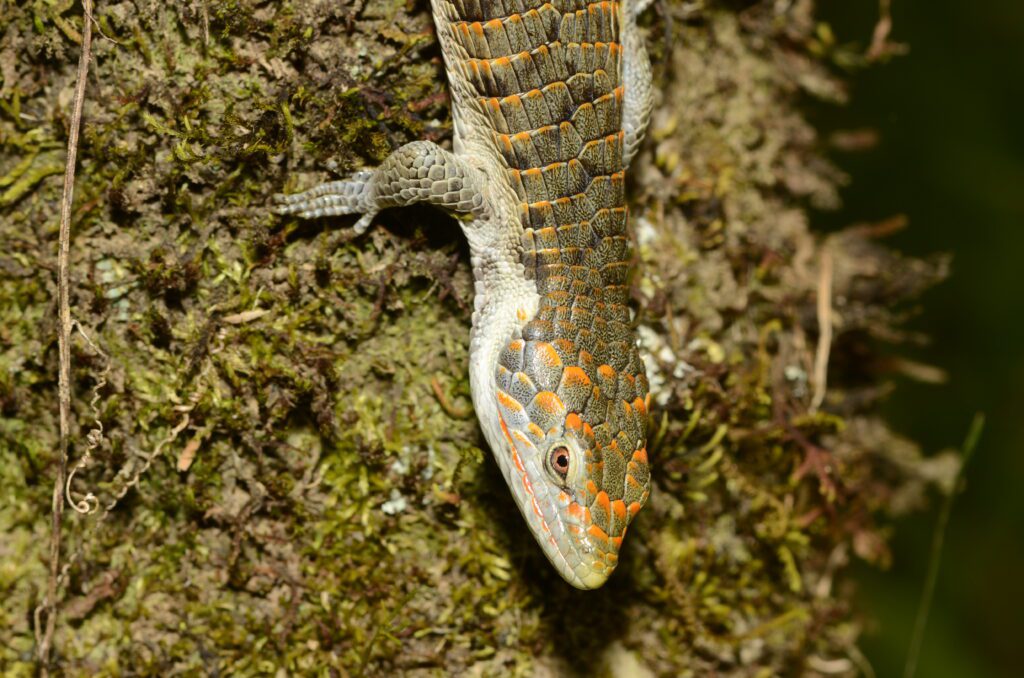

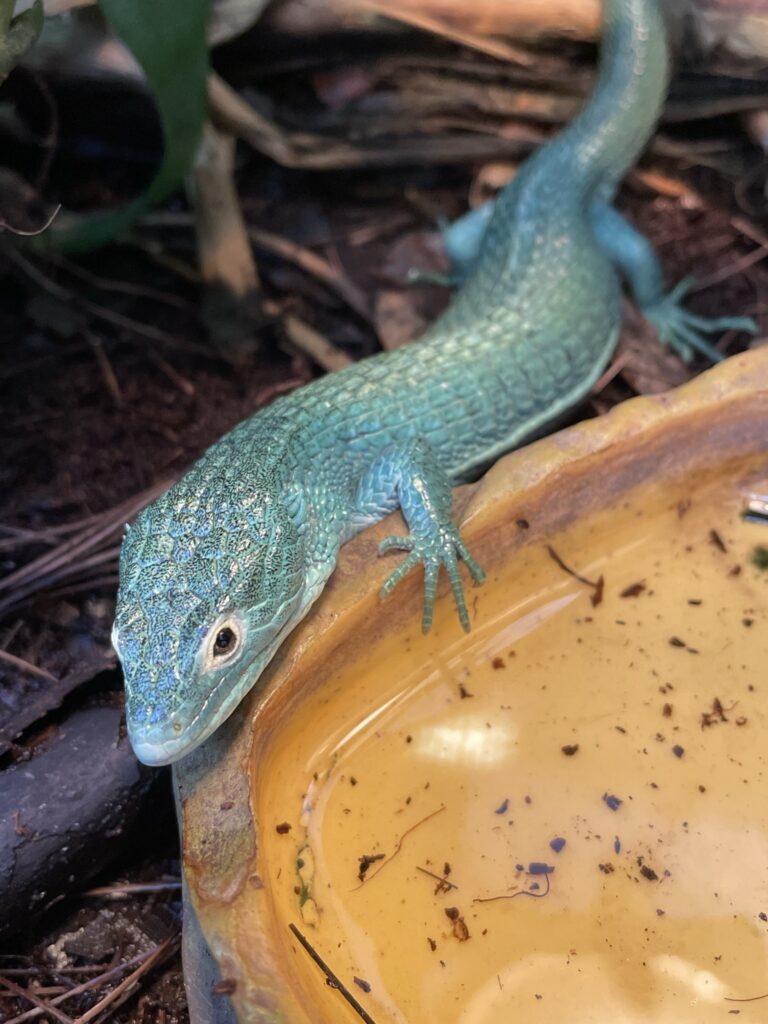
The Abronia Building at Zoological La Aurora
The custom-built building measuring 32m2 is divided into two rooms. One has an open roof that can be retracted to allow for natural UV levels to enter the building, whilst also maintaining natural environmental conditions experienced in Guatemala City. The other room is temperature-controlled and allows the project to maintain the higher-altitude arboreal alligator lizard species that require much lower temperatures.
None of the arboreal alligator lizards housed in the project are on display to the general public. “Whilst we could theoretically put some individuals into the Reptile House, we want to ensure these animals are completely isolated as the juveniles will eventually be released into the wild” added Rowland. “Introducing them to the house could run the risk of disease transfer and really, there just isn’t space in the reptile house where we can do this and precisely control the climate with such precision.”
All enclosures within the building are 45x45x60cm ExoTerra terrariums with some glass panels replaced with mesh to increase ventilation. There are two levels of enclosures within the building, the top that houses the adults and the bottom that houses the juvenile arboreal alligator lizards. On the top shelf, the animals receive natural sunlight and are also given 1X 5.0 UV Incandescent Bulbs. “We only put the extra heat on, on the days that we are feeding them” Rowland added. “We feed the adult Abronia twice a week and find we get better success if we add additional heat, but if it’s on all the time, they will get too hot.”
On the lower level, the animals have two UV bulbs because they don’t receive as much natural UV from the sun. These juvenile animals have additional heat on them all day, as they seem to feed better when we do that. Rowland explained: “The first year we had the project, we had 20 babies, so it took a lot of working out how the environmental parameters change within this building. Anyone who has done a project like this in the past has released the babies straight away, so we had a lot of working out to do, to get the balance right.”
The young arboreal alligator lizards are weighed very regularly to ensure they are healthy. Being such small animals, a weight drop of just a few tenths of a gram could be a significant issue. The babies are also fed more frequently than the adults and take appropriately sized live foods every day. Both adults and juveniles are sprayed with lukewarm water twice a day.
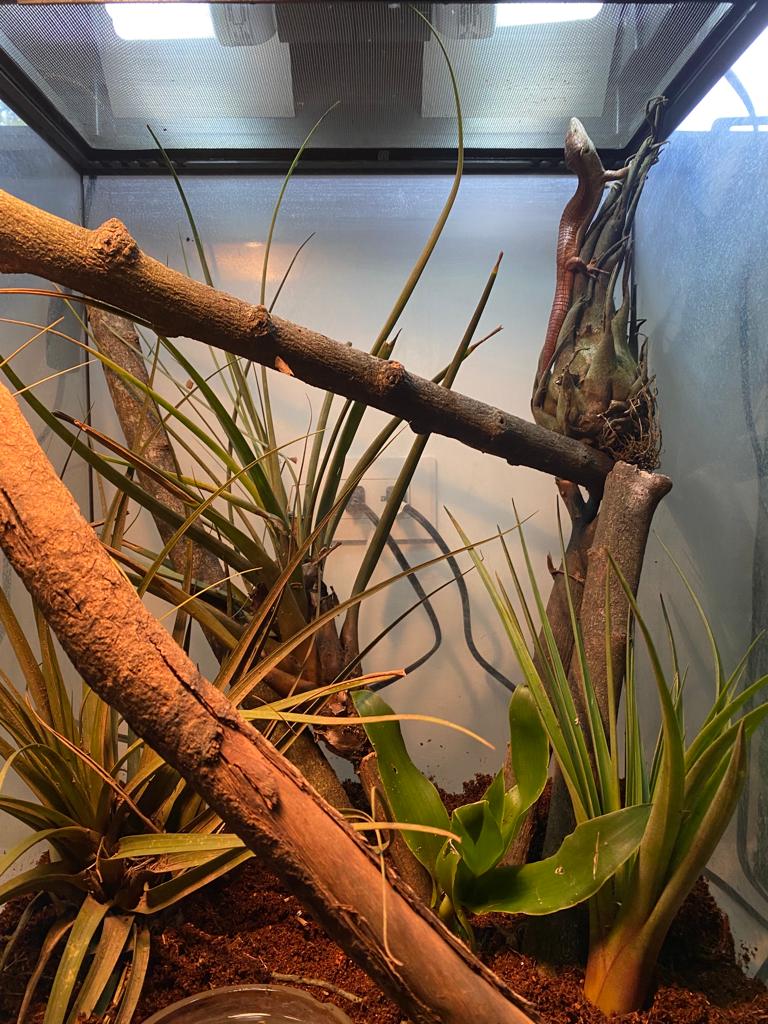
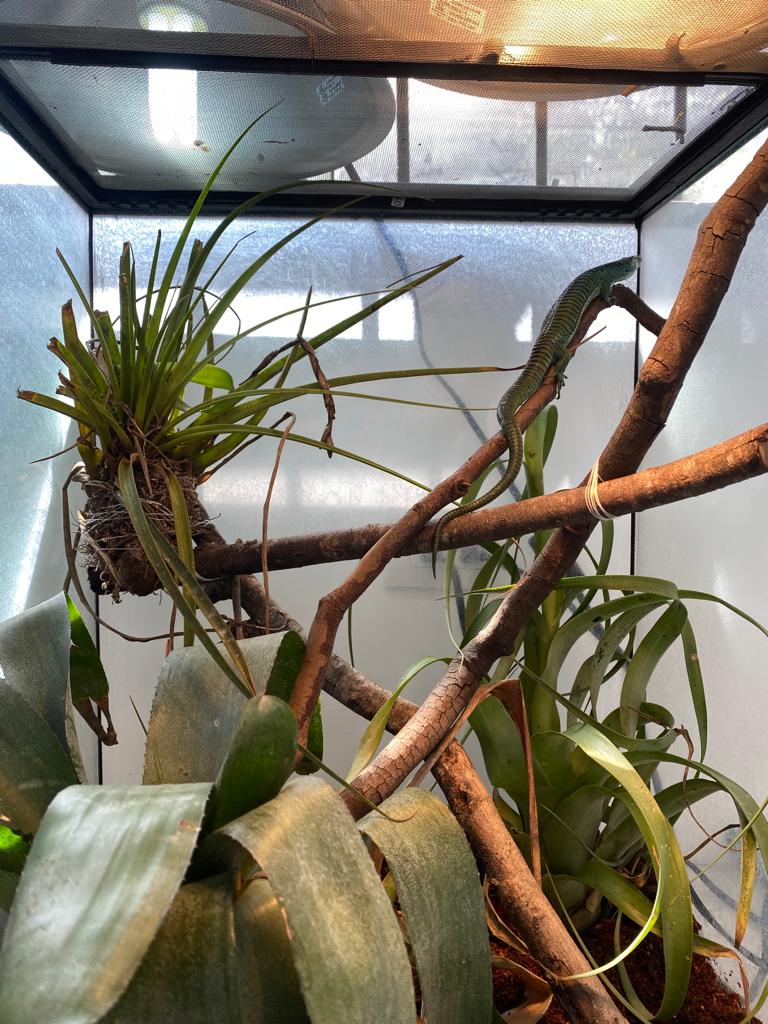


International Trade of Arboreal Alligator Lizards
Arboreal alligator lizards are becoming increasingly popular in private collections. Whilst the most frequently-kept species tend to be those of Mexican origin, it is not uncommon to see Guatemalan Arboreal Alligator Lizards traded between keepers. Whilst there has been some success in captive breeding the genus, the origin of these species is certainly unscrupulous.
There has never been a legal export of Guatemalan wildlife out of Guatemala. This means every endemic species that is seen in the UK and US have either been smuggled or are the offspring of a smuggled generation. As demand for arboreal alligator lizards has spiked in recent years and scientists knew very little about some members of the genus until recently, one may reasonably assume that even the captive-bred stock found today are only a few generations away from smuggled animals.
Rowland continued: “One of my pet bugbears is the popularity of Arboreal Alligator Lizards in captivity right now. I understand why that is; they are beautiful, they are a good size to maintain, and they do well in captivity. However, many Abronia have tiny geographical ranges that contain very low population numbers so removing any number of animals has a seriously damaging effect on populations in the wild.”
“We’re doing everything we can to stop these animals from going extinct. There’s enough pressure with degradation of habitat, that they do not need the extra pressure from the pet trade. Even though it’s great that they are being bred in captivity now, in my opinion, it encourages people to look for the less commonly-found species and that results in smuggling.”
“For me, I hear people say ‘we need to remove these animals from the wild to stop them from going extinct’. Well, reintroductions need to be carefully planned and bloodlines need to be considered. I don’t think that is going to happen from a private keeping perspective. How a UK keeper could repatriate Abronia to Guatemala is just, well, it’s not going to happen. If people really want to make a difference, stop spending thousands of pounds on Abronia, put it all together and buy land. That’s what is going to save them!”
Whilst ex-situ captive breeding can certainly help scientists learn more about husbandry and the breeding cycles of different species, it is important to also know the limitations of private herpetoculture. For example, the entire Abronia Project is done under a CONAP permit. There are many components within the strategy including education outreach, habitat preservation, habitat creation, reserve creation, etc. All aspects must be considered before a true label of “conservation” can be placed on captive husbandry.
“Today, we understand the effects of smuggling animals and its effects on a population. We should be more discerning about our choices” states Rowland. “To hear things like; ‘a new species has been discovered, let’s get it in the trade’ – like what happened with Lanthanotus – legally, before any conservation assessment has been done, before we understand the species’ distribution or natural history is SO frustrating. If someone wants to keep an animal for “conservation” it needs to be done with government backing and various other institutional planning for that to succeed. I feel so privileged to be working with these animals every day and to be taking these steps towards their conservation in the wild.”
Learn more about Zoologico La Aurora’s efforts to save the Guatemalan Beaded Lizard here.